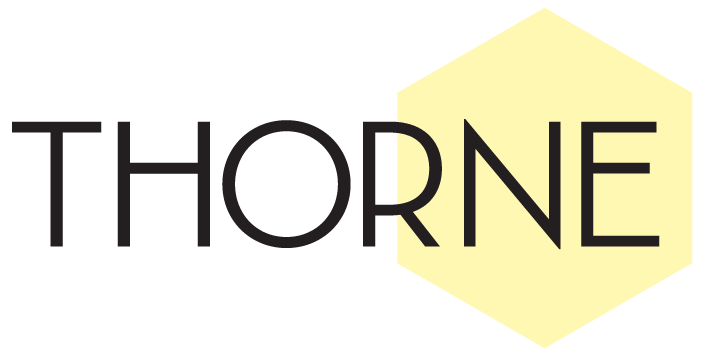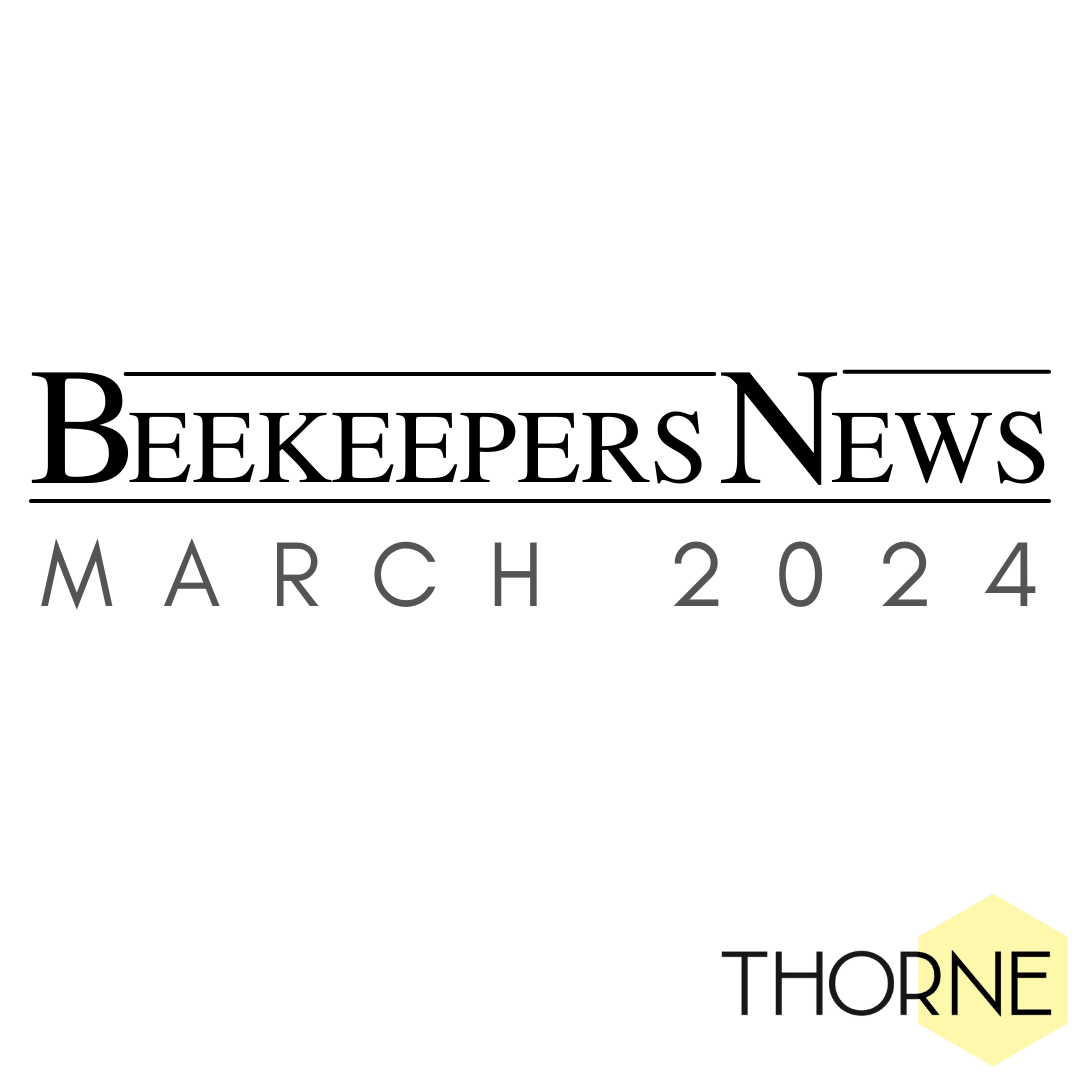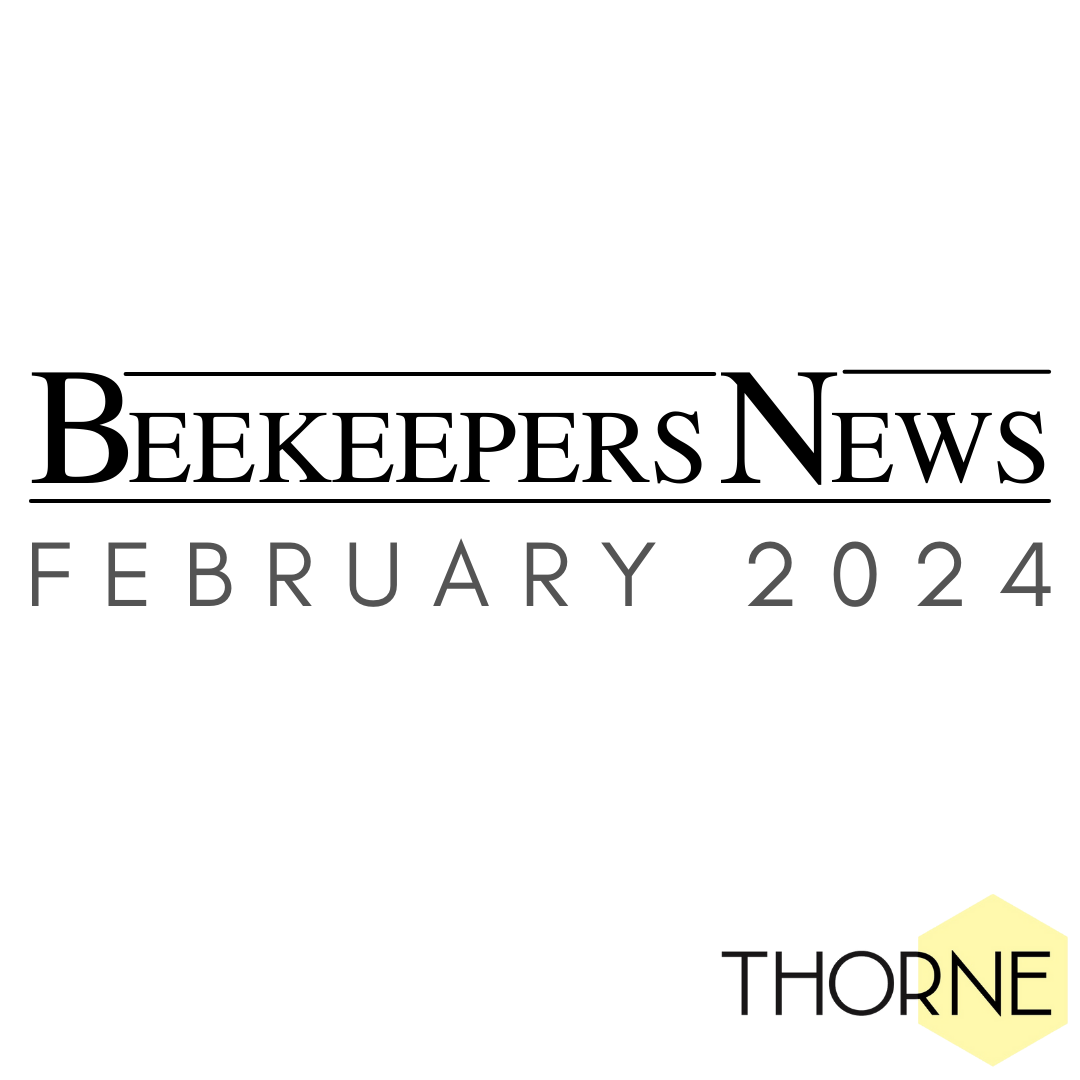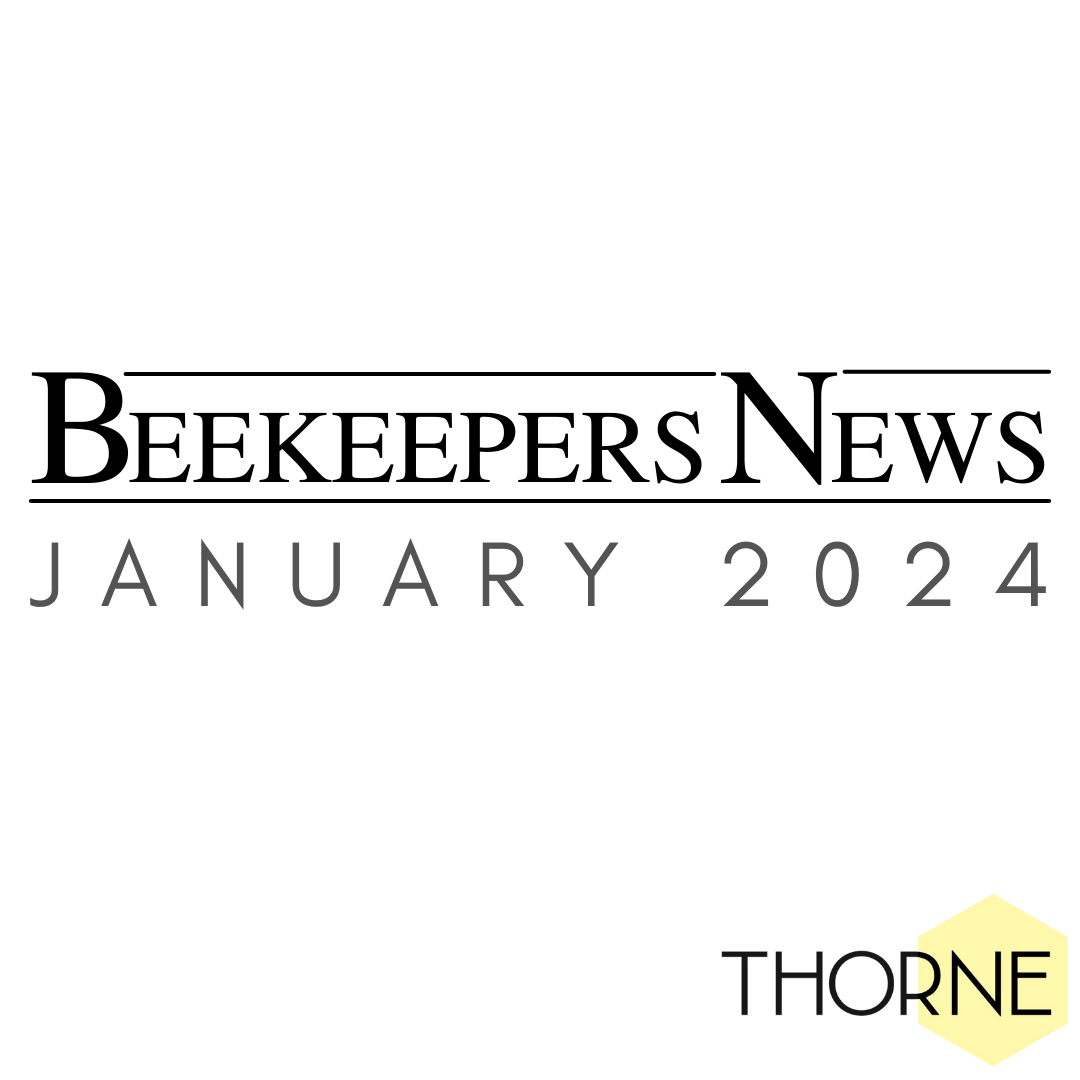November Roundup
November is our month to consolidate and really try to stock up in readiness for our winter sale. This year the sale starts online at 00.01am Saturday 28th December (so basically Friday night/Saturday morning). We will have our usual bargains, english cedar hive parts, second frames and of course the incredibly popular end of line or shop-soiled items. These one-off items do sell very quickly. We try to remove these from the website as soon as they are sold but do bear with us. We receive hundreds of orders during the first few of hours of the sale. Please be patient as we work our way through these. We will send your order out to you just as soon as we can.
We are very sorry but there have been a few problems recently with our website. A new website will be ready early in the spring so we are nursing the current one along until we are ready to migrate to the new site. If you do have any problems then please email sales@thorne.co.uk or call 01673 858555.
This year we are offering Christmas Afternoon teas in our restaurant. These must be booked in advance and cost £7.50 per head. More information and a sample menu is shown above.
Finally, for 2019, we would like to wish all our customers a very merry Christmas and a peaceful and prosperous New Year. Our next newsletter will be out a little later than normal during the second week of January.
Ask the Expert - Winter cleaning
Funnily enough, the best time to do a spring clean in beekeeping is in winter. This is a good time to get your kit sorted out, de-waxed and clean, ready for next season. It is also a good time to think about what equipment you might need to purchase next year or what equipment you can do up to last ‘just one more year’.
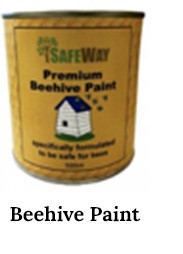
Beehive Paint In order to make the most of your hive parts such as brood bodies and supers, it is a good idea to give them a rub down and a re-paint (if they are not in use over winter, of course). Cedar hives do not need to be painted as the wood itself protects it from the elements, however, paint, stain or oil will prolong its life. Roofs may also need another coat of paint and any damage to the metal work will need seeing to. Floors tend to get fairly grubby over the season so a good clean would be beneficial for these too.

Oxalic acid dihydrate is also a great way to keep your cedar Oxalic acid dihydrate crystals boxes clean as it replenishes the wood. The crystals should be dissolved in hot water and a generous amount of the solution applied to the outside walls. Leave to soak in and then rinse with cold water. This should leave the wood nice and clean, ready for use.
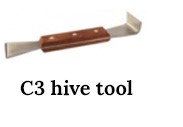
C3 hive tool A hive tool comes in very handy when scraping hive parts down, especially when it comes to wax and propolis which get really stuck down. It is easiest to do this when the weather is cold (or after a short spell in the freezer), as wax and propolis both turn brittle in the cold and flake off easier than when it is warm. The C3 hive tool pictured here is particularly useful for scraping equipment down.
Any frames with drawn comb that you want to keep should be stored appropriately using a method to prevent wax moth. Other frames that need melting down, or any frames you would just like to clean up can be tricky to deal with, especially if you are trying to clean them up using a hive tool or even a kind of homemade boiler.
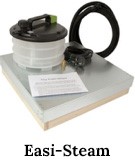
The best way to clean these frames up and melt the wax down is to use the Easi-Steam. This useful addition to your beekeeping equipment makes cleaning up frames and melting down wax so easy. The brood box or super, with or without frames, is placed directly on top of an eke which needs to be sat upon a solid floor. The steam generator is attached via a pipe to the top of the metal roof so once up to temperature, the steam pours through the roof into the box and onto the frames. It reaches about 105°C inside the box, high enough to melt wax and clean up the frames.
Any wax in the box will melt and funnel out the front of the hive, ready to be collected in a bucket. The liquid coming out of the funnel will reflect the state of the frames and/or box beforehand – if they were fairly clean, then the liquid will come out clean. If they were old, especially if frames have had brood in, the liquid will look dirty. Leave whatever comes out the funnel in a bucket overnight and the wax will cool on top of anything else. This can then be removed and any dirt should be scraped off. The clean wax can be traded in for foundation or if refined further, made into candles.
These jobs are certainly not the highlight of the beekeeping calendar! However, with the right tools, it will not be too laborious and you will appreciate it next season when everything is clean and ready to go.
Equiptment Focus
This month we are featuring two new in-hive monitoring devices from Hostabee, the B-Keep and B-Swarm.
B-keep is a small monitoring device that records the temperature and humidity inside the hive. The data collected by the B-keep is then transferred to the B-keep app so the beekeeper can view the information collected by the device from a computer, tablet or smartphone from the comfort of their own home. This is displayed in real-time graphs and the handy guide explains what the fluctuations in temperature and humidity mean for the colony. It is a very useful tool which allows the beekeeper to make decisions about their beekeeping before they even go into the hive, or indeed visit the apiary. The device will indicate the beginning of egg laying in the spring, whether the colony has swarmed or whether is needs feeding, to give just a few examples.
The B-keep hangs between two frames so it doesn’t take up any extra room inside the hive. It uses AAA batteries which should last around 2 years as the B-keep works on low emission networks and only turns on for a few milliseconds every 90 minutes to capture data. There is a one-off payment of £100 then a free subscription for a year. From then on, there is a monthly fee of 3€.
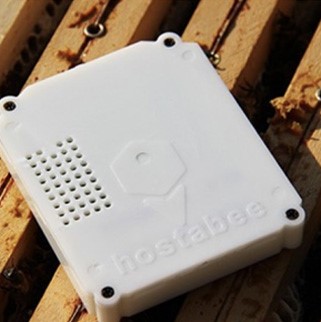
B-swarm is a small anti-theft device that tracks the geographical position of the hive. If your hive moves position for any reason, the device will alert the beekeeper and track the hive to its final destination. The information is transmitted to the app for the beekeeper to view on the computer, tablet or smartphone, again from the comfort of their own home. B-Swarm will not only find the final destination of the hive, but also the route taken and display this on a map for easy finding.
The B-swarm can be attached to a frame, hung between two frames or placed on the floor, wherever is most convenient for the beekeeper. It uses easily replaceable CR123 batteries which should last for 12 months as it uses low emission networks. There is a one-off payment of £115 then a free subscription for a year. From then on, there is a monthly fee of 2€.
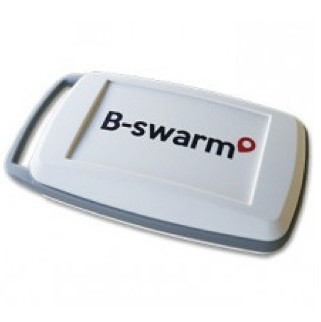
Winter Treatment
Varroa mites can be treated for in winter with a range of oxalic acid products. Oxalic acid can be used at other times in the year but is most effective when the colony is broodless. This is due to two main factors; the first being that varroa reproduce inside sealed cells so when there aren’t any sealed cells they cannot reproduce, and the second being that oxalic acid does not penetrate the wax cell cappings of sealed brood. Consequently, during broodless periods, any varroa in the hive will be walking around the comb, unprotected by wax cappings and are vulnerable to the treatment. In the UK, Nov-Feb may be a good time to treat with oxalic acid depending on where you are and what the weather is like. Two weeks of cold weather should make the colony broodless as the queen should stop laying.
We supply 3 oxalic acid treatments:
This trickle treatment comes with a 1l bottle of oxalic acid and two sachets of sucrose powder which include glycerol and essential oils. The bottle needs to be warmed so that you do not chill the bees when administering the treatment. Use a syringe to trickle 5ml solution between each frame where there are bees. Only use a max. of 50ml per hive and do not use with supers. This is a very easy treatment to use and will treat between 20 and 30 hives, depending on how many seams of bees there are per hive. The shelf life before opening is 2 years and once the solution is made up, it will last for a year in the fridge.
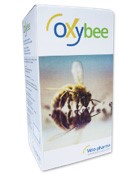
2. Api-Bioxal.
These crystals come in a sachet which can either be used as a trickle treatment or in a vapouriser. To use the trickle method, dissolve the crystals in a warm 1:1 ratio sugar to warm water syrup and administer it using a syringe or trickle 2 bottle. Again, trickle 5ml per seam of bees and do not exceed 50 ml per hive. To vapourise, you will need a vapouriser and full protective gear as the fumes from oxalic acid are harmful if breathed in. Measure 2.3g crystals out into the pan, turn on the vapouriser and leave to vapourise inside the hive for 3 minutes.
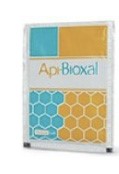
3. Varromed.
This is our newest addition to the winter treatment selection and is another trickle treatment. It is a mix of formic and oxalic acid and is supplied in a 555ml bottle. Simply warm up the bottle so you do not chill the bees and trickle 5ml between each frame where there are bees. The squirty bottle comes with a measure on the side which can be used to measure 5ml per seam. A bottle of Varromed should treat roughly 20 hives and last 30 days once the bottle is opened. Make sure to wear protective clothing, gloves and glasses.
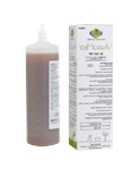
All of the above can be easily applied using our trickle 2 bottle. The 5ml dose chamber and nozzle makes dispensing the solution quick and accurate.
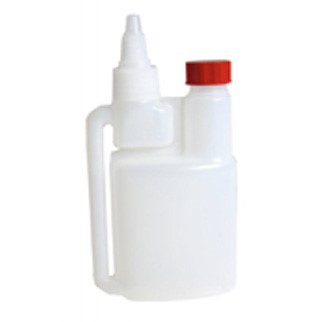
Beekeeping Blog
November 2019
What a wet autumn we are having here in Lincolnshire! This November we have barely seen the sun, just grey, drizzly skies and fields underwater. The ground at the apiary has become totally saturated as you can see from the picture here! As the water does not seem to want to shift, we will just have to take care down in the apiary and keep an eye on the hives. Regardless of the weather, one of the main jobs this month is to heft the hives, meaning we give them a quick lift from the back and sides. This is so we can determine whether the colonies need feeding yet and if so, how much. It has been decided to feed them early December as they feel heavy enough for now but may need a helping hand soon. We always take the roofs off before we heft as they tend to weigh a lot and can mar our judgement of how heavy the hive actually is. We also have to account for the difference in weight of a double brood and a single brood hive – the double brood might just be heavier because of the extra box, not because it has any more stores in than a single brood. It takes a while to get your hand in, which is why it’s worth hefting throughout the season. This gives you a good idea what heavy really is!
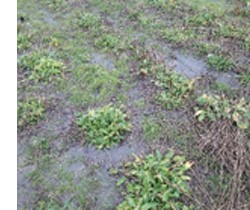
While there are fewer jobs to do with the bees at this time of year, it has been a good opportunity for us to reflect upon last season’s work. One area that has slowed us down this year is the apiary layout. We have decided to change it from a linear apiary to having sets of four hives in a square.
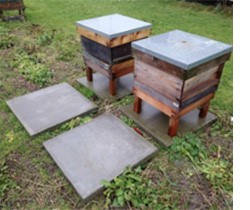
This will be easier on our backs as we can take roofs on and off and place them on the adjacent hive instead of on the ground. It will also help with the issue of drifting and with our new system of taking nucs from the hives next year. It will be a big reshuffle because lots of slabs need laying and the hives will have to be moved into place. This could take some time (and a bit of manpower) but it will be a huge improvement to our apiary and we are very much looking forward to working with it next season.
Bees for Development News
Please help save lives this Christmas. Bees for Development is running its annual fundraising event, The Big Give Christmas Challenge. Up until noon on the 10th December, every penny you donate will be doubled. If you are thinking of making a donation to a good cause, now is the best moment to do it: all donations will be doubled by funding match partner Ethiopiaid and pledged donations. With your support, Bees for Development can help many people gain an income and independence through bees and beekeeping next year. This work really does change lives. Please give generously. http://www.beesfordevelopment.org

National Honey Show
The first of the lecture videos from the 2019 National Honey Show are now available to view on the National Honey Show YouTube Channel: https://www.youtube.com/user/nationalhoneyshow
We wish you all the best for the festive season, and hope Santa brings you all the wonderful beekeeping supplies on your wish list.
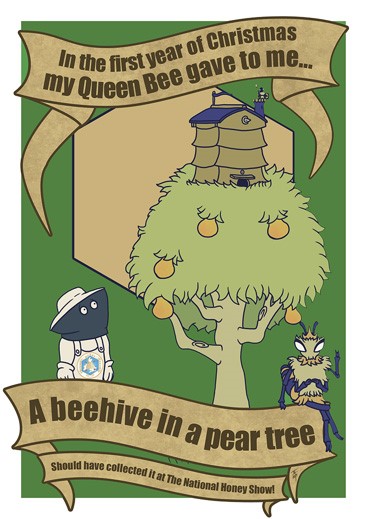
Meanwhile, the team are already planning a great show for next year, same fabulous venue, Sandown Park Racecourse: Thursday 22nd to Saturday 24th October 2020.
Upcoming Events
Christmas Opening Hours
Rand – Closed 24th to 29th Dec incl. Open 30th Dec 10am-4pm and 31st Dec 10am-12 noon.
Open as usual Thursday 2nd January.
Windsor - Closed 22nd Dec to 6th Jan. Open as usual Tuesday 7th January
Stockbridge - Closed 21st Dec to 6th Jan. Open as usual Tuesday 7th January
Devon - Closed 22nd Dec to 5th Jan. Open as usual Monday 6th January
Scotland - Closed 21st Dec to 5th Jan. Open as usual Monday 6th January
Winter Sale begins – Online 00.01am 28th December 2019
Winter Sale begins – On the phone and in store 9.00am 2nd January 2020
